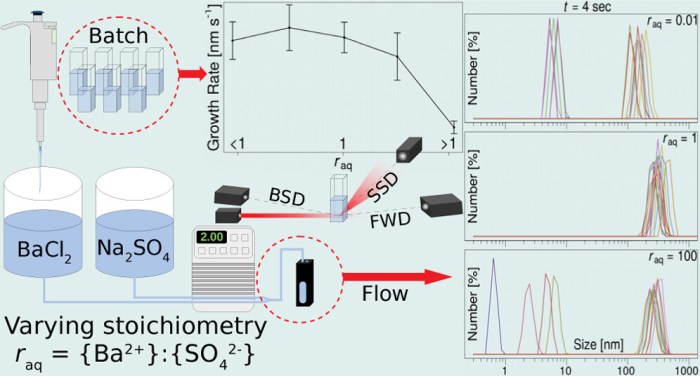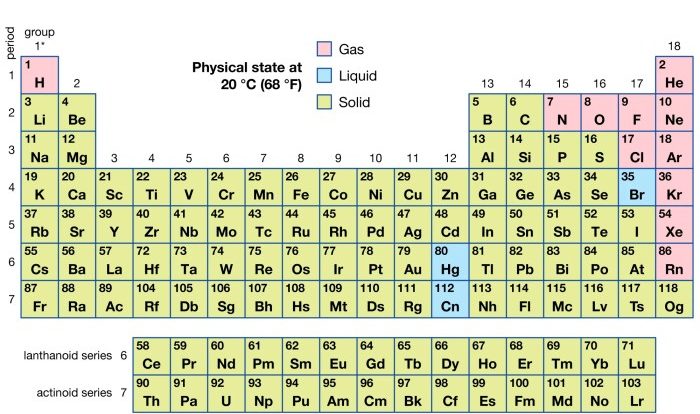With Gizmos Periodic Trends Answer Key as our guide, let’s embark on a captivating journey through the periodic table. Discover the hidden patterns and trends that govern the behavior of elements, shaping our world in countless ways.
Delve into the organization of elements, their atomic structures, and the fascinating periodic trends that emerge. From atomic radius to electronegativity, we’ll unravel the secrets that lie within each element’s position on the table.
Gizmos Periodic Trends Overview: Gizmos Periodic Trends Answer Key
The periodic table is a tabular arrangement of chemical elements, organized on the basis of their atomic number, electron configurations, and recurring chemical properties. It is a powerful tool for understanding and predicting the properties of elements and their compounds.
paragraphThe periodic table is organized into 18 vertical columns, called groups, and 7 horizontal rows, called periods. The groups are numbered 1-18 from left to right, and the periods are numbered 1-7 from top to bottom. Elements in the same group have similar chemical properties because they have the same number of valence electrons.
Valence electrons are the electrons in the outermost energy level of an atom, and they determine the chemical reactivity of the element.
Organization of Elements
Elements are arranged in the periodic table in order of increasing atomic number. The atomic number of an element is the number of protons in its nucleus. Protons have a positive charge, and they determine the number of electrons that an atom has.
The number of electrons in an atom is equal to the number of protons, so the atomic number also determines the number of electrons in an atom.Elements are also arranged in the periodic table according to their electron configurations. The electron configuration of an element is the arrangement of its electrons in its energy levels.
The energy levels are numbered 1, 2, 3, and so on, from the innermost energy level to the outermost energy level. The outermost energy level is the valence shell, and it contains the valence electrons.Elements in the same period have the same number of energy levels.
Elements in the same group have the same number of valence electrons.
Types of Periodic Trends
Periodic trends are the patterns observed in the chemical and physical properties of elements as we move across and down the periodic table. These trends can be used to predict the properties of an element based on its position in the table.
There are four main types of periodic trends: atomic radius, ionization energy, electronegativity, and electron affinity.
Atomic Radius
Atomic radius is the distance from the nucleus to the outermost electron shell of an atom. It generally decreases from left to right across a period and increases from top to bottom down a group.
For example, the atomic radius of sodium (Na) is 186 pm, while the atomic radius of chlorine (Cl) is 99 pm. This is because the number of electrons in the outermost shell increases from left to right across a period, which increases the shielding effect and decreases the atomic radius.
Ionization Energy
Ionization energy is the energy required to remove an electron from an atom. It generally increases from left to right across a period and decreases from top to bottom down a group.
For example, the first ionization energy of sodium (Na) is 496 kJ/mol, while the first ionization energy of chlorine (Cl) is 1251 kJ/mol. This is because the number of protons in the nucleus increases from left to right across a period, which increases the attraction between the nucleus and the electrons and increases the ionization energy.
Electronegativity
Electronegativity is the ability of an atom to attract electrons towards itself. It generally increases from left to right across a period and decreases from top to bottom down a group.
For example, the electronegativity of sodium (Na) is 0.9, while the electronegativity of chlorine (Cl) is 3.0. This is because the number of protons in the nucleus increases from left to right across a period, which increases the attraction between the nucleus and the electrons and increases the electronegativity.
Electron Affinity
Electron affinity is the energy released when an electron is added to an atom. It generally decreases from left to right across a period and increases from top to bottom down a group.
For example, the electron affinity of sodium (Na) is 53 kJ/mol, while the electron affinity of chlorine (Cl) is -349 kJ/mol. This is because the number of electrons in the outermost shell increases from left to right across a period, which increases the repulsion between the electrons and decreases the electron affinity.
Factors Influencing Periodic Trends
Periodic trends are patterns in the properties of elements that repeat across the periodic table. These trends are influenced by several factors, including atomic number, electron configuration, and nuclear charge.
Atomic Number
The atomic number of an element is the number of protons in its nucleus. It determines the number of electrons in the element’s neutral atom and the overall charge of the nucleus. As the atomic number increases across a period, the number of electrons increases, and the nuclear charge becomes more positive.
This leads to an increase in the effective nuclear charge, which is the net positive charge experienced by the electrons in the outermost energy level.
Electron Configuration
The electron configuration of an element refers to the arrangement of its electrons in different energy levels and orbitals. The outermost electrons, known as valence electrons, play a significant role in determining the chemical properties of the element. As we move across a period, the number of valence electrons increases, and the valence electrons are added to the same energy level.
This results in a gradual change in the chemical properties of the elements.
Nuclear Charge
The nuclear charge is the positive charge of the nucleus, which is determined by the number of protons in the nucleus. As we move down a group, the number of energy levels increases, and the valence electrons are added to higher energy levels.
This increases the distance between the valence electrons and the nucleus, reducing the effective nuclear charge experienced by the valence electrons. This leads to a decrease in the ionization energy and electronegativity of the elements.
Applications of Periodic Trends
Periodic trends are useful in predicting chemical properties and reactions. They can also be used to design new materials, understand chemical bonding, and develop new technologies.
Predicting Chemical Properties and Reactions
Periodic trends can be used to predict the chemical properties of an element based on its position in the periodic table. For example, elements in the same group tend to have similar chemical properties. This is because they have the same number of valence electrons, which are the electrons in the outermost shell of an atom.
Valence electrons determine the chemical properties of an element.
Periodic trends can also be used to predict the reactions of an element. For example, elements that are close together in the periodic table tend to react with each other to form compounds. This is because they have similar electronegativities, which is a measure of an atom’s ability to attract electrons.
Designing New Materials
Periodic trends can be used to design new materials with specific properties. For example, scientists can use periodic trends to create materials that are stronger, lighter, or more conductive than existing materials.
Understanding Chemical Bonding
Periodic trends can be used to understand chemical bonding. For example, periodic trends can be used to explain why some elements form ionic bonds, while others form covalent bonds. Ionic bonds are formed between metals and nonmetals, while covalent bonds are formed between nonmetals.
Developing New Technologies
Periodic trends can be used to develop new technologies. For example, periodic trends can be used to develop new drugs, fertilizers, and energy sources.
Exceptions to Periodic Trends
Periodic trends are general observations about the properties of elements as they are arranged in the periodic table. However, there are some exceptions to these trends.
Noble Gases
The noble gases are the elements in Group 18 of the periodic table. They are all colorless, odorless, and unreactive gases. This is because they have a full valence shell of electrons, which makes them very stable.
The noble gases are an exception to the trend of increasing reactivity from left to right across a period. They are also an exception to the trend of increasing atomic radius from top to bottom within a group.
Transition Metals, Gizmos periodic trends answer key
The transition metals are the elements in Groups 3-12 of the periodic table. They are all shiny, ductile, and malleable metals.
The transition metals are an exception to the trend of increasing ionization energy from left to right across a period. They also exhibit variable oxidation states, which is not observed in other groups.
Helpful Answers
What is the purpose of the periodic table?
The periodic table organizes elements based on their atomic number, electron configuration, and chemical properties, allowing us to understand periodic trends and predict the behavior of elements.
What are some examples of periodic trends?
Periodic trends include atomic radius, ionization energy, electronegativity, and electron affinity. These trends vary across groups and periods in the periodic table.
How do factors like atomic number and electron configuration influence periodic trends?
Atomic number and electron configuration determine the number of protons and electrons in an element, which in turn affect its size, ionization energy, and other properties.

